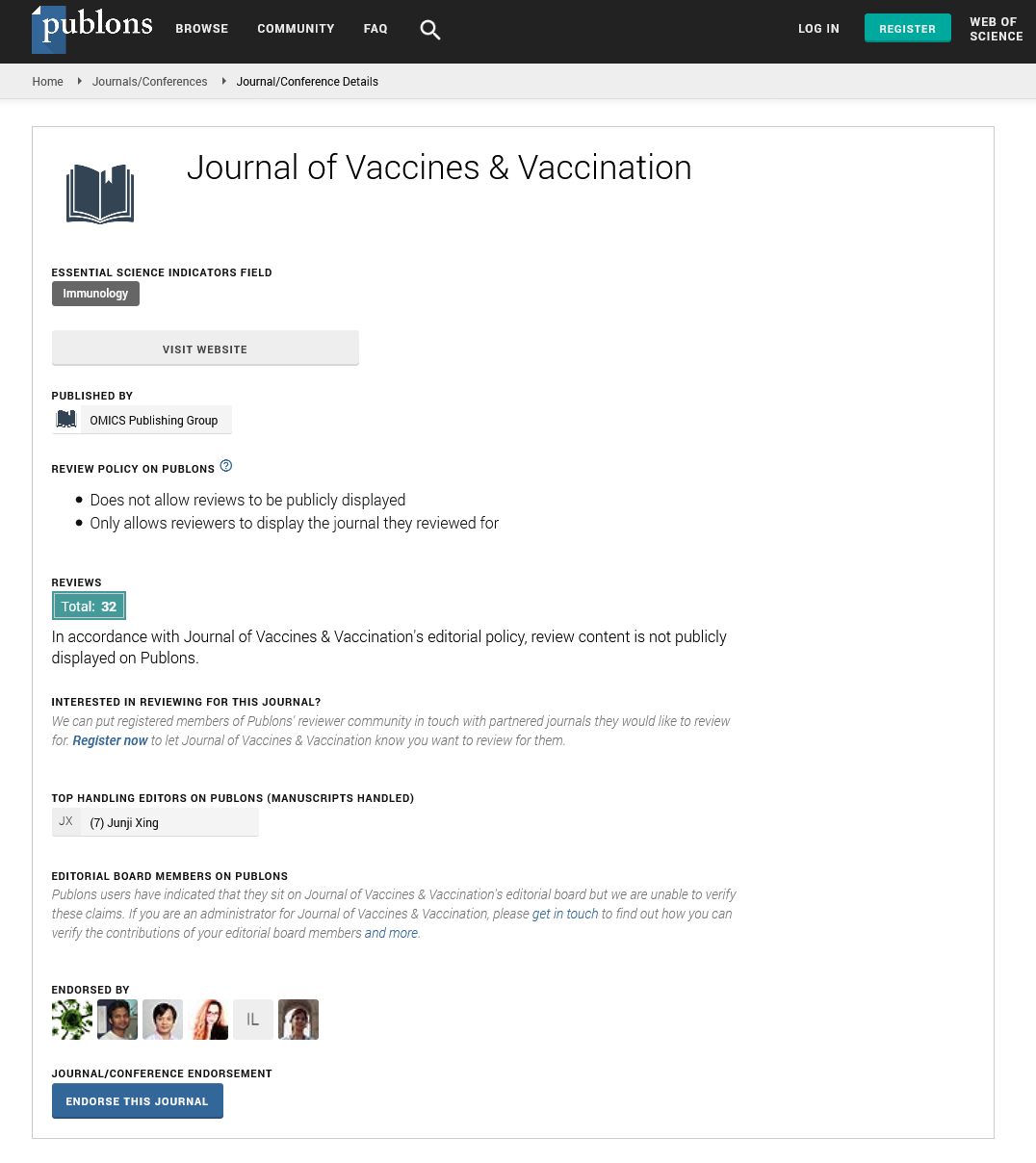Indexed In
- Academic Journals Database
- Open J Gate
- Genamics JournalSeek
- JournalTOCs
- China National Knowledge Infrastructure (CNKI)
- Scimago
- Ulrich's Periodicals Directory
- RefSeek
- Hamdard University
- EBSCO A-Z
- OCLC- WorldCat
- Publons
- MIAR
- University Grants Commission
- Geneva Foundation for Medical Education and Research
- Euro Pub
- Google Scholar
Useful Links
Share This Page
Open Access Journals
- Agri and Aquaculture
- Biochemistry
- Bioinformatics & Systems Biology
- Business & Management
- Chemistry
- Clinical Sciences
- Engineering
- Food & Nutrition
- General Science
- Genetics & Molecular Biology
- Immunology & Microbiology
- Medical Sciences
- Neuroscience & Psychology
- Nursing & Health Care
- Pharmaceutical Sciences
The observation of the immunization effect of hepatitis B vaccine to the newborn with HBeAg positive
3rd International Conference on Vaccines & Vaccination
July 29-31, 2013 Embassy Suites Las Vegas, NV, USA
Zhang Ping, Lu Wei and You Wei
Scientific Tracks Abstracts: J Vaccines Vaccin
Abstract:
U sing the same dose of hepatitis B vaccine, HBsAg negative and HBeAg-positive newborns can produce higher and more sustained amount of anti-HBs than HBeAg-negative newborns birthed by HBV infected mothers, suggesting the effect of the presence of HBeAg and hepatitis B vaccine simultaneously on the anti-HBs is worth to discuss. With the approval of the ethical argument, we observed 460 cases of hepatitis B virus carriers (HBVDNA≥106), the venous blood detection of HBsAg of all the newborns were negative within 2 hours of birth, 234 HBeAg negative cases of experimental group at birth quantitative M (P25, P75) was 48000 (23.875, 86.050), 226 cases of control group was HBeAg-negative. Both groups were injected with hepatitis B immune globulin 200 IU within 6 hours after birth , and 10μg hepatitis B vaccine immunization at 0, 1, 6 months. When they are 2 years old, the anti-HBs detection M (P25, P75) of study group was 456.850 (312.900, 652.325), the control group M (P25, P75) was 149.800 (65.300, 343.400). Statistically, Z=-9.963, p<0.01. When they are 5 years old, detection of anti-HBs group M (P25, P75) was 612.600 (366.025, 982.550) and control group M (P25, P75) was 215.00 (51.05, 478.15). Statistically, Z=-8.260, P<0.01. Both groups were HBsAg negative. Concluded that the presence of serum HBeAg in newborns may be more sensitive to immune response of hepatitis B vaccination, resulting in higher and more long-lasting anti-HBs we point out that combination use of HBeAg and hepatitis B vaccine may increase the immunogenicity of hepatitis B vaccine. Keywords: HBeAg-positive, newborns, immune effect.

